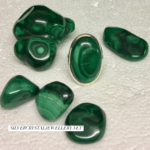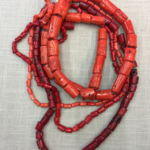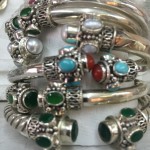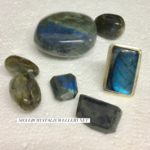For thousands of years pearls have been worn by the rich and glamorous, and given to loved ones as extravagant gifts. Traditionally worn by brides, for thousands of years they have been a symbol of love, purity and perfection. Nowadays pearl jewellery is available to more people than ever before, and you no longer need to be royalty to afford it. Pearls of all shapes, sizes and colours are grown on farms and with so many varieties to choose from any bride-to-be has no trouble finding the perfect pearls to match her wedding gown. In fact, there are so many different types of pearl that it can be difficult to know which to choose, so here are a few things to look out for:
Type of pearl:There are two types of pearl, saltwater and freshwater. Saltwater pearls are farmed in the sea, and are usually bigger, rounder and clearer than their freshwater cousins. Because of this they are also often more expensive. Freshwater pearls are farmed in lakes and rivers, usually smaller and often less regular in shape, though they come in a large range of different colours.
Size When it comes to pearls, size does matter. The bigger the pearl, the more expensive it will be. Saltwater pearls are generally bigger than freshwater, and are more highly sought after.
Nacre Pearls take a very long time to form inside the shell of an oyster. When a foreign object gets into the shell the oyster produces layers of nacre, which gradually build up around the nucleus forming the pearl. The thicker the nacre coating, the longer the pearl will last as jewellery. Some cultured saltwater pearls are made with a ‘beaded’ large nucleus used to speed up the process and keep the pearls as round as possible. Most freshwater pearls and all natural pearls are formed entirely of nacre, which accounts for their more irregular shape.
Luster: No pearl is perfectly shiny like glass but they do have a certain reflective sheen to them, called the lustre. Pearls that have this shimmery surface are the most popular type.
Colour The natural colours of pearls are various shades of white, pink and lilac although cultured pearls are often dyed so they are available in the colour of your choice. A pearl necklace made of matching naturally-coloured pearls will cost more than dyed ones, as it can take a long time to collect enough matching pearls for a whole string.
Shape When we think of the ideal pearls, we usually picture them to be perfectly round and smooth. In reality this is rare, and these round pearls are very expensive as they are hugely sought after. Small cultured pearls are more likely to be round and some larger ones are formed around a bead to help the shape develop. Irregularly shaped pearls are still used to produce unique pendants and earrings.
Matching It can be difficult to find enough matching pearls to make a whole necklace, so a string of regular naturally coloured pearls will cost more as it is rarer and more desirable.



